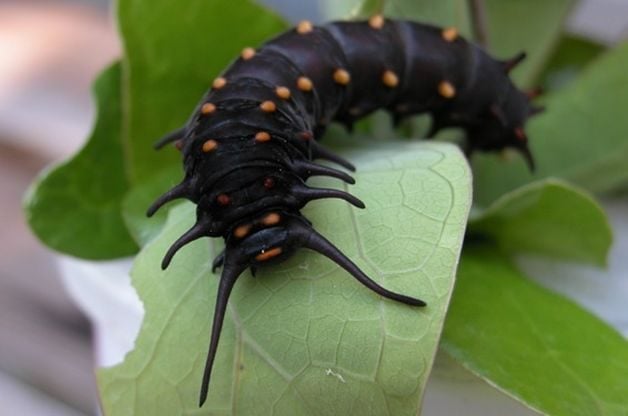Attract Pipevine Swallowtail Butterflies to Your Garden
Updated: Jun. 28, 2021
Want to see a pipevine swallowtail butterfly in your own garden? Try planting native pipevines host plants to draw them in.
The pipevine swallowtail seems like a drab black butterfly, until you get a glimpse of the iridescent blue lower wings of the male flashing in the sun. Once you see that, I promise, you’ll be hooked and want to attract this butterfly to your own garden! Here’s what you need to know about their life cycle and host plants.
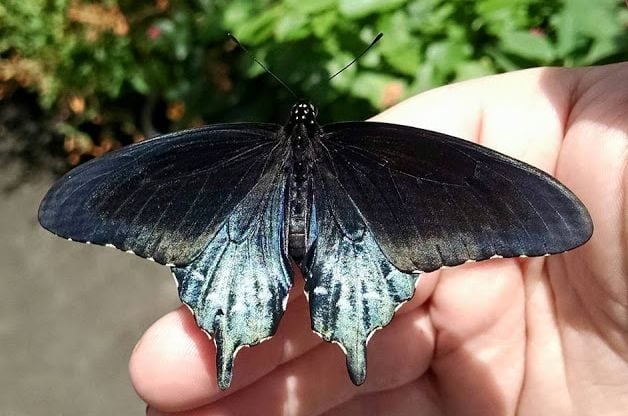
How to Identify Pipevine Swallowtail Butterflies
The pipevine swallowtail (Battus philenor) flies across most of the U.S., with the exception of the Northwest. It has the distinctive swallowtail shape, with tails extending from the lower wings. These tails are used as a form of defense—a predator attempting to snatch this butterfly from the air is likely just to get a mouthful of tail while the rest of the butterfly takes off. Females are a fairly uniform black on top, with a row of white spots along the lower wing edge. Males display that distinctive iridescent blue. Both have a row of orange and white spots on their underwings, backed by blue.
Check out 6 common swallowtail butterflies you should know.
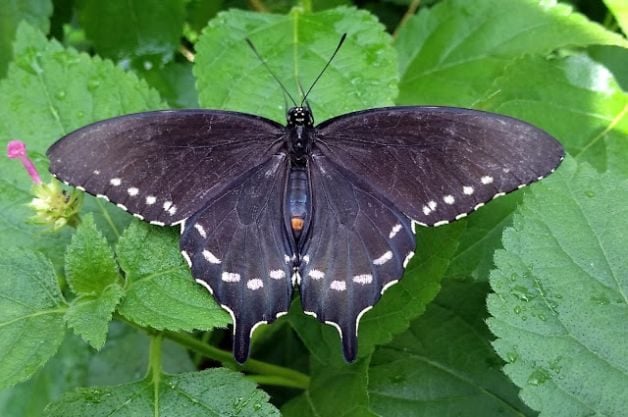
Wingspan
2 3/4 to 5 inches.
Distinctive Markings
Blackish from above with deep blue hindwings and a row of light dots. Also dark with light markings underneath, featuring a row of large orange dots.
Range
As far north as Pennsylvania, down to the Southeast and Southwest and into California
Habitat
Open areas, including gardens
Pipevine Swallowtail Eggs and Caterpillars
Pipevine swallowtail eggs are red-orange with small bumps, laid in clutches on their host plant pipevines. The caterpillars are gregarious in their early days, which means they hang out in groups feeding together. When they get a bit bigger, they tend to go their own way. As the pipevine caterpillar grows, its appearance starts to change as well. It slowly becomes darker and has more pronounced dots of color and longer black tubercles on the front of their heads, which look like antennae.
These caterpillars use their tubercles actively to feel out the world around them. These are some of the fastest caterpillars I know; they take off quickly when startled and move with surprising speed. The chrysalis of this butterfly is camouflaged to look like a dead leaf, being brown with some yellow markings.
Learn about eastern tiger swallowtail butterflies and caterpillars.
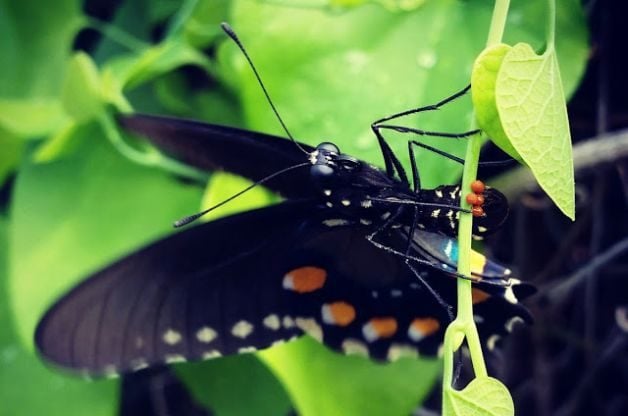
Pipevine Swallowtail Host Plants
Plants from the genus Aristolochia are sometimes also called pipevines. As their name suggests, pipevine swallowtails host on pipevines. If you want to increase your chances of seeing these butterflies in your garden, plant some native pipevines for them to lay their eggs on. It’s important to plant only Artisolochia species native to your area if you want the caterpillars to survive, though. Pipevines contain toxins, and pipevine swallowtail butterflies have evolved to use this to their advantage. As they feed, they sequester these toxins in their bodies, making them poisonous to many predators as both caterpillars and butterflies. However, the toxin levels vary in different Aristolochia species, and planting a non-native species can actually be fatal to the larvae of pipevine swallowtails.
Visit your local native plant nursery or call your county extension office for advice on native pipevines. Here are some very general guidelines:
- In the eastern half of the U.S., try Virginia Snakeroot (A. serpentaria) or Woolly Pipevine (A. tomentosa)
- In California and the southwest, use California Pipevine (A. californica)
- Avoid Elegant Pipevine (A. littoralis) as it is generally fatal to pipevine swallowtail caterpillars
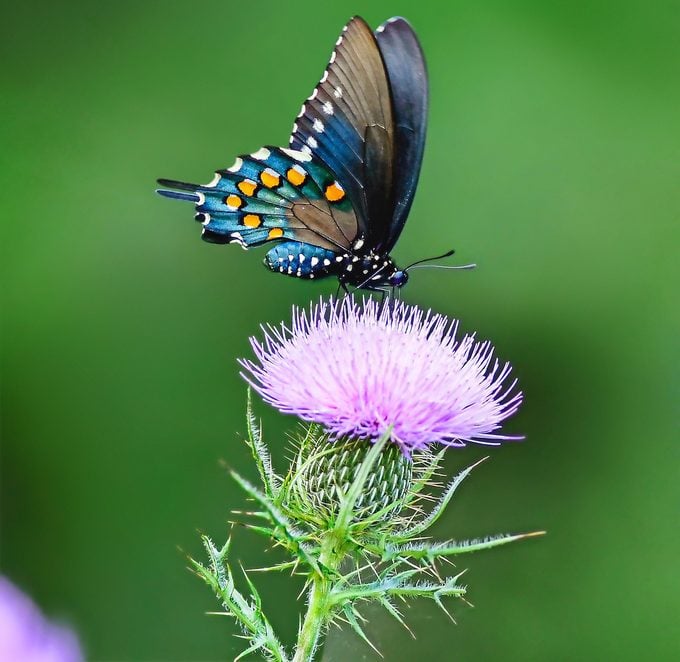
“Late summer is my favorite time to go for a walk in my local state park. I love to see butterflies on native thistle, and the pipevine swallowtail is one of my absolute favorites,” says Patricia A. Winter of Beckley, West Virginia.





















